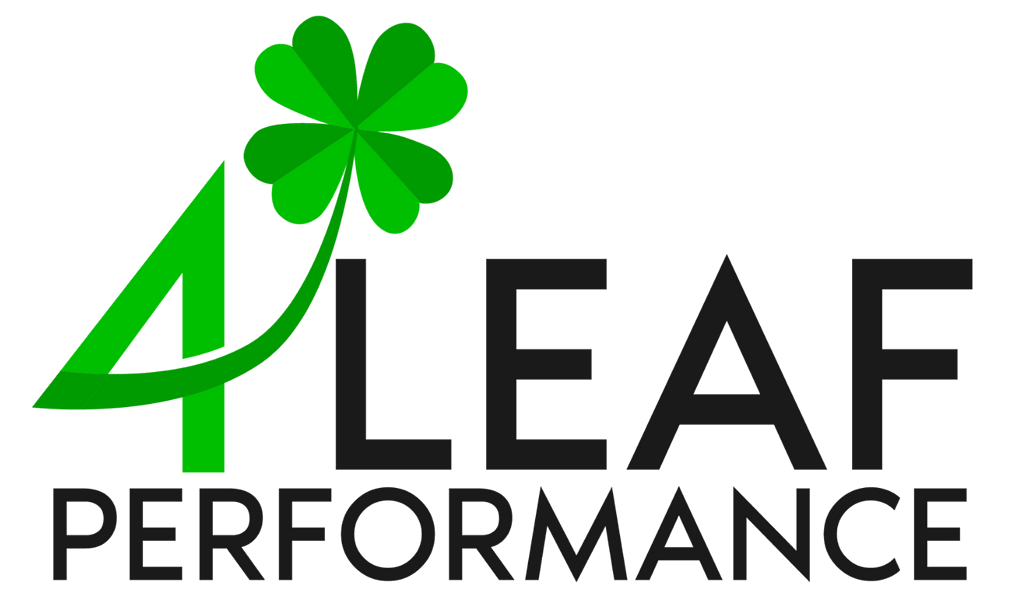Staying competitive in business means finding ways to increase efficiency and reduce costs. One of the most effective strategies to achieve these goals is through business process automation (BPA). Automating repetitive and time-consuming tasks can streamline your operations, improve accuracy, and free up valuable resources for more strategic activities.
Business process automation (BPA) can significantly transform your business’s operation. Whether you’re looking to automate invoicing, customer service, or data entry, BPA offers a range of benefits that can help your business run more smoothly and efficiently.
Understanding Business Process Automation
What is Business Process Automation (BPA)?
Business process automation (BPA) refers to using technology to execute recurring tasks or processes in a business where you can replace manual effort. BPA involves integrating applications, restructuring labor resources, and using software applications throughout the organization. When you automate your business processes, you free up valuable time for your employees to focus on more critical tasks.
Key Benefits of BPA
Implementing business process automation offers several advantages:
- Improved Efficiency and Productivity: Automation helps complete repetitive tasks faster and more accurately than manual processes.
- Reduced Operational Costs: By reducing the need for manual labor, BPA can lower your operational costs. Automating processes also reduces errors, which can be costly to fix.
- Enhanced Accuracy and Reduced Human Error: Automated systems are less prone to mistakes, ensuring your processes run smoothly and accurately.
- Better Compliance and Record-Keeping: Automation helps maintain accurate records and ensures compliance with industry regulations. This is particularly useful for businesses that handle sensitive information.
- Improved Customer Satisfaction and Service Delivery: Faster and more accurate processes lead to better customer service. Automated customer service systems such as chatbots can provide immediate assistance, enhancing customer satisfaction.
Common Misconceptions about BPA
Despite its benefits, there are several misconceptions about business process automation:
- BPA Will Replace Jobs: While automation can change the nature of certain jobs, it doesn’t necessarily eliminate them. Instead, it allows employees to focus on more strategic and value-added activities.
- BPA is Only for Large Enterprises: Business automation is not limited to large companies. Small and medium-sized businesses can also benefit significantly from automating their processes.
- BPA is Expensive and Complex: While some automation solutions can be costly, many affordable and scalable options are available. Additionally, the long-term savings and efficiency gains often outweigh the initial investment.
Identifying the Need for Business Process Automation
Signs Your Business Needs Automation
Recognizing the signs that your business could benefit from business process automation is the first step toward greater efficiency. Here are some indicators that it might be time to automate your business:
- High Volume of Repetitive Tasks: If your team spends significant time on repetitive tasks like data entry or scheduling, it’s a clear sign that you could automate these processes.
- Frequent Errors and Inconsistencies: Manual processes are prone to errors, which can lead to costly mistakes. Automation ensures accuracy and consistency.
- Slow Processing Times: If your processes are slow and causing delays, automation can speed things up, enhancing productivity and customer satisfaction.
- Scalability Issues: Manual processes can become a bottleneck as your business grows. Automating the process can help you scale efficiently.
- High Operational Costs: Manual labor costs can add up. Enterprise process automation can reduce these costs by minimizing the need for manual intervention.
Assessing Current Business Processes
Before implementing business process automation, assessing your current processes is essential. Here’s how you can evaluate them effectively:
- Map Out Existing Processes: Document each step of your current workflow. This will help you identify areas that are ripe for automation.
- Identify Bottlenecks: Look for stages where delays or errors frequently occur in your processes. These are prime candidates for automation.
- Gather Feedback from Employees: Your employees can provide valuable insights into which tasks are most time-consuming and error-prone. Their input can help you prioritize automation efforts.
- Analyze Performance Metrics: Use data to identify inefficiencies. Metrics such as processing time, error rates, and transaction cost can highlight areas for improvement.
Setting Clear Objectives for Automation
It’s crucial to set clear objectives to ensure the success of your business automation efforts. Here are some tips to help you define your goals:
- Define Specific Goals: Determine what you want to achieve, whether it’s reducing costs, increasing productivity, or improving accuracy. Having specific goals will guide your efforts.
- Establish Key Performance Indicators (KPIs): Identify the metrics you will use to measure the success of your automation initiatives. Common KPIs include time savings, error reduction, and cost savings.
- Align with Business Strategy: Ensure your automation goals align with your business strategy. Automation should support your broader objectives and help you achieve your long-term vision.
- Set Realistic Expectations: Understand that automation won’t solve all problems instantly. Set achievable milestones and be prepared for adjustment as your team adapts to new systems.
Preparing for BPA Implementation
Conducting a BPA Readiness Assessment
Conduct a readiness assessment to ensure your organization is prepared for the changes. Here’s how to get started:
- Evaluate Current Technology: Assess whether your existing technology infrastructure can support automation tools. Upgrading systems may be necessary to ensure compatibility.
- Identify Skill Gaps: Determine if your team has the necessary skills to manage and maintain automated processes. If not, consider training or hiring to fill these gaps.
- Analyze Organizational Culture: Gauge your organization’s openness to change. Successful automation requires buy-in from all levels of the organization.
Identifying Stakeholders and Building a Team
Successful business automation projects involve the right people. Identifying stakeholders and building a dedicated team are crucial steps:
- Select Key Stakeholders: Include individuals from various departments who will be affected by automation. This ensures a comprehensive understanding of needs and challenges.
- Assemble a Project Team: Form a team with members who have diverse skills, including project management, IT, and process management. This team will drive the implementation of business process automation.
- Assign Roles and Responsibilities: Clearly define the roles and responsibilities of each team member to ensure accountability and effective collaboration.
Budgeting for Business Process Automation
Financial planning is a critical component of preparing for business process automation. Here’s how to budget effectively:
- Estimate Costs: Calculate the costs of purchasing automation tools, training employees, and any necessary system upgrades.
- Allocate Resources: Determine how much of your budget you will allocate to each phase of the automation project, from planning and implementation to maintenance and support.
- Plan for Contingencies: Setting aside a portion of the budget for unexpected expenses can help prevent delays and keep the project on track.
Choosing the Right Processes to Automate
Criteria for Selecting Processes
It’s essential to choose the right processes to automate. Here are some criteria to consider:
- Repetitiveness: Repetitive processes involving high volumes of tasks are prime candidates for automation. Automate the process to save time and reduce errors.
- Complexity: Simplify complex processes that require multiple steps and involve various departments. Business automation can streamline these processes and improve efficiency.
- Manual Effort: Processes that consume significant manual effort and time can benefit significantly from automation.
- Error-Prone Tasks: Automate your business processes prone to human error to enhance accuracy and reliability.
- Impact on Business: Prioritize processes that significantly impact your business operations and customer satisfaction.
High-impact Processes for Automation
Identifying high-impact processes to automate can deliver quick wins. Consider automating:
- Customer Service: Implementing chatbots and automated response systems can improve customer service efficiency and satisfaction.
- Invoicing and Payments: Automate invoicing and payment processing to reduce errors and speed up cash flow.
- Inventory Management: Use automation to automatically manage inventory levels, track stock, and reorder supplies.
- HR Processes: Automate tasks such as employee onboarding, payroll, and performance reviews to streamline HR operations.
- Marketing Campaigns: Automate marketing campaigns to ensure consistent communication and track engagement metrics.
Avoiding Common Pitfalls in Process Selection
- Over-Automating: Don’t try to automate every process at once. Focus on high-impact areas first and gradually expand your automation efforts.
- Ignoring Employee Input: Involve employees in the selection process. They have valuable insights into which tasks are most cumbersome and could benefit from automation.
- Neglecting Integration: Ensure that your automated processes can seamlessly integrate with your existing systems and software. Enterprise process automation should enhance, not disrupt, your operations.
- Failing to Monitor and Adjust: Continuously monitor automated processes to identify areas for improvement. Adjustments may be necessary to optimize performance.
Selecting BPA Tools and Technologies
Overview of BPA Tools
Various tools are available for business automation, each designed to cater to different needs. Here are some categories of BPA tools to consider:
- Workflow Automation Tools: These tools help streamline and automate workflows by managing tasks and approvals. Examples include Asana, Trello, and Monday.com.
- Robotic Process Automation (RPA) Tools: RPA tools automate repetitive tasks that involve interacting with digital systems. Popular RPA tools include UiPath, Blue Prism, and Automation Anywhere.
- AI and Machine Learning Tools: These tools leverage artificial intelligence to automate complex tasks like data analysis and customer interactions. Examples include IBM Watson and Google AI.
- ERP Systems: Enterprise Resource Planning (ERP) systems integrate various business processes into a unified system. Examples include SAP, Oracle ERP, and NetSuite.
Evaluating BPA Software Options
It’s essential to evaluate your options carefully. Consider the following factors:
- Ease of Use: Choose user-friendly software that doesn’t require extensive training. Your team should be able to adopt the tool quickly and effectively.
- Scalability: Ensure that the software can scale with your business. As your business grows, the tool should be able to handle increased workloads without compromising performance.
- Integration Capabilities: The software should seamlessly integrate with your existing systems and processes, ensuring a smooth transition and minimizing disruptions.
- Customization: Look for software that allows customized workflows and processes to fit your business needs.
- Vendor Support: Consider the level of support provided by the vendor. Reliable customer support can help address any issues that arise during and after implementation.
Key Features to Look for in BPA Solutions
Look for software that offers the following key features:
- Process Mapping and Design: The ability to map and design workflows is essential for effective automation. This feature helps visualize and optimize processes before automation.
- Analytics and Reporting: Comprehensive analytics and reporting capabilities allow you to monitor performance, identify improvement areas, and make data-driven decisions.
- Security and Compliance: Ensure the software includes robust security features to protect your data and comply with industry regulations, maintaining data integrity and avoiding compliance issues.
- Flexibility and Adaptability: The software should be flexible enough to adapt to changing business needs, ensuring that your automation efforts remain relevant and effective over time.
- Mobile Access: Your team can manage and monitor automated processes from anywhere, which is especially useful for businesses with remote or mobile workforces.

Developing an Implementation Plan
Crafting a BPA Roadmap
Here’s how to develop a practical BPA roadmap:
- Define the Scope: Identify which processes you will automate first and set clear objectives for each, prioritizing tasks and focusing efforts.
- Set Milestones: Break down the implementation into manageable phases with specific milestones, allowing you to track progress and adjust as needed.
- Assign Responsibilities: Clearly define who is responsible for each task within the project team. Assigning roles ensures accountability and smooth execution.
Setting Timelines and Milestones
Establishing a timeline with key milestones helps keep the project on track. Here are steps to ensure timely implementation:
- Create a Detailed Timeline: Develop a timeline outlining tasks and milestones. Include estimated start and end dates for each phase of the project.
- Monitor Progress: Regularly review progress against the timeline to identify any early delays or issues, allowing for timely interventions.
- Adjust as Needed: Be flexible and ready to adjust timelines if unexpected challenges arise. Flexibility ensures that the project continues moving forward despite obstacles.
Risk Management and Contingency Planning
Effective risk management and contingency planning are essential for a smooth BPA implementation. Here’s how to prepare for potential risks:
- Identify Potential Risks: List risks that could impact the project, such as technical issues, budget overruns, or employee resistance.
- Develop Mitigation Strategies: For each identified risk, create strategies to mitigate its impact, including additional training, securing backup resources, or adjusting timelines.
- Create a Contingency Plan: Develop a plan for responding if a risk materializes to ensure the project can continue with minimal disruption.
Implementing BPA Solutions
Step-by-Step Implementation Process
Implementing business process automation requires a structured approach. Follow these steps to ensure a smooth implementation:
- Prepare Your Team: Communicate the benefits and goals of business automation to your team. Ensure everyone understands their roles and responsibilities in the implementation process.
- Set Up the Tools: Install and configure your selected BPA tools. Ensure they integrate smoothly with your existing systems and processes.
- Pilot Testing: Begin with a pilot test on a smaller scale. Choose a single process to automate and monitor the results closely.
- Collect Feedback: Gather feedback from users involved in the pilot test. Identify any issues or improvements needed before full-scale implementation.
- Full-Scale Implementation: Once the pilot test is successful, roll out the automation solution across all relevant processes. Ensure continuous support and troubleshooting during this phase.
Integrating BPA with Existing Systems
Seamless integration of business process automation with your existing systems is crucial for a smooth transition. Here’s how to achieve this:
- Conduct Compatibility Checks: Ensure the BPA tools are compatible with your current systems to prevent disruptions and ensure smooth operation.
- Use APIs for Integration: Leverage APIs (Application Programming Interfaces) to connect BPA tools with your existing software. APIs facilitate data exchange and workflow integration.
- Data Migration: Plan to migrate existing data to the new automated system. Ensure data integrity and security during the migration process.
- Continuous Monitoring: Regularly monitor the integration to identify and resolve any issues to help maintain seamless operation and efficiency.
Ensuring Data Security and Compliance
Data security and compliance are critical during implementation. Follow these best practices to protect your data and ensure compliance:
- Implement Security Measures: Use encryption, firewalls, and other security measures to protect sensitive data. Regularly update security protocols to address new threats.
- Compliance with Regulations: Ensure your automation processes comply with relevant industry regulations and standards, including data protection laws like GDPR or HIPAA.
- Regular Audits: Conduct regular audits to verify that your automated processes adhere to security and compliance standards. Address any discrepancies promptly.
- Access Controls: Implement strict access controls to ensure only authorized personnel can access sensitive information, reducing the risk of data breaches.
Training and Change Management
Training Employees on New Systems
Practical training is essential for the successful implementation of business process automation. Here’s how to train your team:
- Develop Comprehensive Training Programs: Create training programs that cover all aspects of the new automated systems. Include hands-on sessions, tutorials, and documentation.
- Use a Blended Learning Approach: Combine in-person training with online resources to ensure that all employees can access the training materials regardless of location.
- Provide Continuous Support: Offer ongoing support through helpdesks, Q&A sessions, and refresher courses to help employees become comfortable with the new systems and resolve any issues quickly.
Managing Resistance to Change
Resistance to change is a common challenge when implementing enterprise process automation. Here are strategies to manage resistance effectively:
- Communicate Benefits Clearly: Explain the advantages of business automation to your team. Highlight how it will make their jobs more accessible and more efficient.
- Involve Employees Early: Engage employees in the planning and implementation stages. This involvement helps them feel valued and reduces resistance.
- Address Concerns Promptly: Listen to employee concerns and address them promptly. Providing clear answers and solutions helps alleviate fears and build trust.
- Showcase Quick Wins: Demonstrate the immediate benefits of automation with quick wins. Small successes can build momentum and encourage acceptance.
Building a Culture of Continuous Improvement
A culture of continuous improvement ensures that your business process automation efforts remain effective and evolve with your business needs. Here’s how to foster this culture:
- Encourage Feedback: Create channels for employees to provide feedback on automated processes. Use this feedback to make improvements and adjustments.
- Promote Innovation: Encourage employees to suggest new ideas for automation. Reward innovative solutions that enhance efficiency and productivity.
- Regularly Review Processes: Schedule regular reviews of your automated processes. Identify areas for improvement and update workflows as needed.
- Invest in Ongoing Training: Continually update training programs to reflect new tools and technologies and ensure your team remains skilled and capable of managing automated systems.

Monitoring and Evaluating Process and Automation
Key Performance Indicators (KPIs) for BPA
Here are some important KPIs to monitor:
- Process Efficiency: Measure the time it takes to complete automated processes compared to manual ones. You should see improved efficiency if implemented correctly.
- Error Rate Reduction: Track the reduction in errors after implementing BPA. Lower error rates indicate that automation is improving accuracy and reliability.
- Cost Savings: Calculate the cost savings achieved through automation, including reductions in labor costs, error correction costs, and other operational expenses.
- Employee Productivity: Monitor changes in employee productivity. Automation should free up time for employees to focus on higher-value tasks.
- Customer Satisfaction: Measure customer satisfaction levels to see if they improve with faster and more accurate service delivery.
Continuous Monitoring and Optimization
Continuous monitoring is crucial for maintaining the effectiveness of your automations. Here’s how to ensure ongoing optimization:
- Regularly Review Performance Data: Use analytics and reporting tools to review performance data regularly. Identify trends and areas that need improvement.
- Set Up Alerts and Notifications: Implement alerts for anomalies or issues in automated processes to allow quick resolution and minimize disruptions.
- Conduct Periodic Audits: Perform regular audits of your automated processes to ensure they are running smoothly and meeting your business goals.
- Adjust and Improve: Use the insights gained from monitoring to make necessary adjustments. Continuously refine and improve your automated workflows.
Gathering and Analyzing Feedback
Feedback from employees and customers can provide valuable insights into the effectiveness of your business process automation. Here’s how to gather and analyze feedback effectively:
- Employee Feedback: Create a system for employees to share their experiences with automated processes. Use surveys, suggestion boxes, and regular meetings to collect feedback.
- Customer Feedback: Monitor customer feedback through reviews, surveys, and direct interactions. Understand how automation is impacting their experience.
- Analyze Feedback: Analyze the feedback to identify common issues and areas for improvement. Use this data to make informed decisions about process adjustments.
Scaling and Expanding BPA
Scaling Automation Across the Organization
Once you have successfully implemented business process automation in select areas, it’s time to scale these efforts across the organization. Here’s how to expand your automation initiatives:
- Identify Additional Processes: Look for other repetitive, error-prone, or time-consuming processes in different departments that could benefit from automation.
- Prioritize Based on Impact: Prioritize processes that will significantly impact efficiency and productivity when automated.
- Standardize Automation Practices: Develop standardized practices and guidelines for implementing automation across various departments, ensuring consistency and efficiency.
Identifying New Opportunities for Automation
As your business grows and evolves, new opportunities for business automation will arise. Here’s how to stay proactive in identifying these opportunities:
- Regular Process Reviews: Conduct regular reviews of all business processes to identify new areas that could benefit from automation.
- Employee Suggestions: Encourage employees to suggest processes that they believe could be automated. Their on-the-ground perspective can reveal valuable insights.
- Stay Updated on Technology: Keep abreast of the latest advancements in automation technology. New tools and solutions can open up additional opportunities for process and automation.
Continuous Improvement Strategies
To ensure your automation efforts remain effective and continue to deliver value, adopt a mindset of continuous improvement. Here’s how:
- Regularly Update Workflows: Continuously refine and update your automated workflows based on performance data and feedback to ensure they remain optimized and efficient.
- Invest in Training: Provide ongoing training to your employees to keep them up-to-date with new automation tools and techniques and maximize your automation efforts’ effectiveness.
- Measure and Adjust: Regularly measure the performance of your automated processes against your KPIs. Use this data to make informed adjustments and improvements.
- Foster a Culture of Innovation: Encourage a culture where employees are motivated to seek out and suggest innovative automation solutions. Recognize and reward successful initiatives.

Moving Forward with Business Process Automation
Implementing business process automation can significantly transform your operations, making them more efficient, accurate, and cost-effective. By understanding BPA, identifying the need for automation, and carefully planning and implementing the right tools and strategies, you can achieve substantial improvements in productivity and customer satisfaction.
By following these guidelines, you can successfully automate your business and gain a competitive edge in today’s fast-paced market.
Ready to take your business to the next level with business process automation? At 4 Leaf Performance, we specialize in helping companies like yours implement and optimize automation strategies. Contact us today to learn how our business coaching services can support your journey toward greater efficiency and success. Let’s automate the process and drive your business forward.



